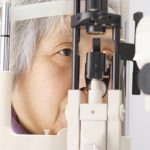
If you’re overweight but have dodged chronic health issues like high cholesterol and high blood pressure, you might not think that losing weight is a priority. But an analysis of five years of records on 3.5 million people — underweight, normal weight, overweight and obese — has found reason for concern. The researchers discovered that even if people didn’t have any metabolic diseases at the start of the record-keeping, those who were obese were more likely than those of normal weight to develop health issues as time went on. Those health issues include coronary heart disease, cerebrovascular disease, heart failure and peripheral vascular disease (a circulation disorder that affects blood vessels beyond the brain and heart). But no one is completely immune to health problems. Researchers also found that being at a normal weight doesn’t necessarily eliminate all risk for metabolic abnormalities, like high blood pressure, high cholesterol and diabetes. Indeed, 10% of those at a normal weight had at least one metabolic issue. Also, no matter what your weight, the more of those health markers you have, the greater your chances of a heart event, like an attack. This research underscores the importance of getting regular health screenings and knowing your numbers: cholesterol (total, HDL and LDL) and triglycerides; blood pressure (systolic and diastolic); and blood sugar. Then you can work with your health… read on >



































